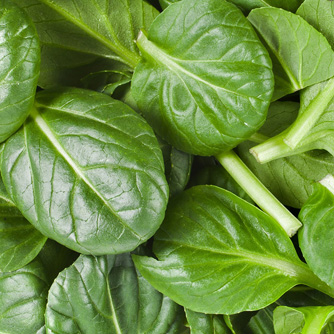Spinach (English)
BackSpinach (Spinacia oleracea) contains so many vitamins and antioxidants that it’s no wonder it is often labelled a superfood (just ask Popeye). This leafy green is easy to grow in the veggie patch or pots but needs to be grown quickly to maintain tenderness and better flavour. Steam it, stir fry it or add it to your favourite soups, salads and savoury dishes. Yum!
Spinach originates from the Middle East, has been cultivated in Asia for thousands of years but is commonly called English spinach. Other plants which are sometimes called spinach (like silverbeet and Warrigal greens) are different again. Confusing hey?
How To Grow Spinach
Spinach is a cool climate plant and tends to ‘bolt’ to seed early in hot weather and long day lengths. This makes autumn and winter the ideal time to sow although regions with very mild summers can get away with a spring sowing as well.
In most cases spinach should be grown in full sun. If growing in regions which experience warm winters some afternoon shade is beneficial to reduce the risk of bolting.
Prepare your garden with plenty of organic matter (manures and compost) and sow the seed directly into the soil to a depth of 2cm. Pre-soaking seeds overnight will help with germination. Lightly cover and water in well with OCP eco-seaweed. Maintain an even moisture level throughout the germination period (about 2-3 weeks). Mulching with a fine sugar cane mulch will definitely help retain moisture and keep the leaves clean from soil splashes as they grow.

Freshly harvested spinach
Sowing Guide for Spinach
| Growing Zone | Sowing Time |
| Cool Zones | Autumn, Winter, Spring |
| Mediterranean Zones | Autumn, Winter |
| Warm & Temperate Frost Free Zones | Autumn, Winter |
| Tropical & Subtropical Zones | Autumn |
Fertilising and Harvesting Spinach
It is important to keep a regular supply of nutrients up to spinach by applying OCP eco-seaweed and OCP eco-aminogro every 2-3 weeks. This ensures the leaves are tender and tasty plus gives plenty of new growth which you can keep harvesting. In poor soils you can also apply side dressings of organic matter halfway through the growing season as well.
You can start harvesting around 8-10 weeks after planting. Harvest the outer leaves first and cut them off (rather than pulling) to minimise plant disturbance/damage. Be sure to leave some leaves on the plant so that it can replenish itself faster.
Pests and Disease Problems for Spinach
If grown at the right time of year spinach is an easy crop to grow. However you might encounter the following problems:
- Snails and slugs will enjoy the soft young plants so protect them with OCP eco-shield organic pellets.
- Bolting to seed due to drying out, hot weather or long day lengths which all encourage spinach to start producing seeds instead of more leaves. To avoid this sow seed at the correct time of year and keep the moisture levels up right through the growing period. Look for spinach varieties which say they are ‘bolt resistant’ to improve your results.
- Greenhouse whitefly may take a liking to your tender spinach so spray with OCP eco-oil at the first sign of trouble to keep things in check.
- Mites and aphids can also be a problem. Spray with a horticultural oil as required.
- Caterpillars can sometimes be found munching on leaves so check regularly and pick off by hand or spray with OCP eco-caterpillar killer.
- Root-knot nematodes can also attack spinach roots resulting in yellowy, stunted growth and plants which wilt easily. If the roots have small lumpy growths and are excessively knotted or distorted then treat the soil with OCP eco-nemguard.
- Various diseases can cause leaf spots especially after periods of extended wetness or high humidity. They can be hard to control once established so focus on prevention by watering plants in the morning so foliage dries quickly, allow enough space between plants for good air circulation and giving regularly applications of OCP eco-seaweed and OCP eco-aminogro to keep plant tissue strong. Practice crop rotation as well.

Baby spinach leaves


